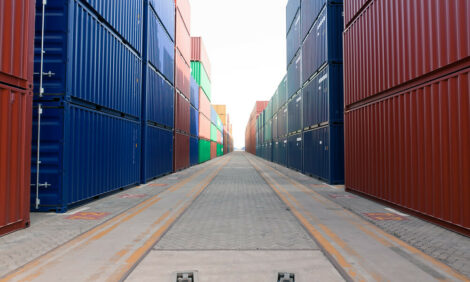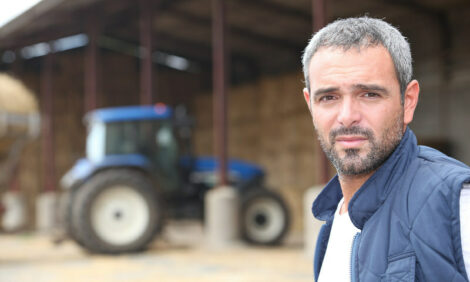



German Meat Consumption Stable
GERMANY - Despite all negative reports on industrial livestock farming and lacking animal protection, the consumption of meat and meat products remains remarkably stable, with consumption levels hardly changing in 2011.Shifts between the types of meat and meat products might be due to varied price developments in the individual segments. With a volume of approximately 7.3 million tonnes, the demand for meat and meat products remains unchanged as compared to the previous year, according to InterMeat, a trade show that took place in Düsseldorf this week.
Per-capita consumption of pork remains at 39.2kg and is not expected to change significantly in 2012. On account of reports about use of antibiotics in the poultry industry, the consumption of poultry suffered slightly for a short while; however, statistics are again predicting continuous per-capita consumption of about 11.5kg. Beef and veal at 8.6kg and lamb at 0.6kg balance out at almost the same values as in 2010. No significant changes are expected for 2012. All in all, the per-capita consumption of meat lies at about 61kg.
One reason for this comparatively good result may lie in the fact that the meat industry is reacting more to the criticism directed at industrial livestock farming and has implemented certain quality programmes. It has also informed consumers about these programmes. Some examples:
Animal protection: Many companies are in the process of implementing efficient, sustainable improvements in the area of animal protection. Exact performance specifications are made available to all market participants within a specific system in order to allow for sustainable improvements of animal protection levels by using a point system.
Product safety: Preventive consumer protection is already being implemented in the preliminary steps. The key for increased product safety lies in the integration of the steps agriculture, slaughtering, cutting and processing. For example, antibiotics monitoring within one quality system can be used as a preventive measure to minimise the development of antibiotics resistance.
Environment: Exact benchmarks are being implemented, for example, for CO2 balances, water and sewage, conventional and renewable energies and finally also for the product cycle. The achievement of established environmental targets has become a main focus for many companies in the meat industry.
Further Increases in the Meat Processing Sector
In 2011, the companies of the German meat products industry were able to increase the production of sausage products from 1,484,184 tonnes (2010) to 1,498,647 tonnes. This corresponds to an increase of 1.0 per cent as compared to the previous year. With 878,513 tonnes (2010: 866,809 tonnes), boiled sausages are the largest product group, followed by raw sausages with 450,150 tonnes (2010: 444,923 tonnes) and cooked sausages with 169,984 tonnes (2010: 172,452 tonnes). However, the numbers of the production statistics of the German meat products industry do not yet include significant product groups, such as dry-cured and cooked ham. In addition, numerous companies have expanded their product range to include segments such as instant meals, soups or pastas, which are not included in the statistics, either.
As compared to the previous year, the sales volume increased from € 15.8 billion to €17.2 billion (+8.6 per cent). However, the increase in sales volume is an expression of radical increases of the raw material prices and energy costs during the recent months, as well as the expansion of new product segments. On the other hand, the revenue situation of the companies is difficult, since they find it difficult to pass on with immediate effect the significant cost increases due to the tough competitive conditions in the retail trade.
Growth in Meat Production
In the past year in Germany, 8.2 million tonnes of meat were produced in commercial abattoirs, which is an increase of 1.5 per cent as compared to the previous year. According to the preliminary numbers published by the Federal Statistical Office (Destatis), a new record was achieved in meat production. At 68 per cent, pork has the highest share in the meat production.
Next is poultry at 17 per cent and beef at approximately 14 per cent. The joint share of sheep, goats and horse meat lies at only 0.3 per cent. The growth trend for hog slaughter remained unbroken in 2011, as well. With a slaughter volume of 59.3 million animals, 1.5 per cent more hogs were slaughtered than in the previous year. The produced volume of pork therefore reached a record level of just under 5.6 million tonnes. Beef production decreased by 2.7 per cent to 1.16 million tonnes, as compared to the previous year. The number of slaughtered animals decreased by approximately two per cent to 3.68 million cattle.
Meat Sector Leader in Exports
For the past four years, the meat sector has been occupying the largest share of the entire value of Germany's agricultural exports. In 2011, a total of €8.74 billion of meat and sausage products were exported. The entire export in the meat sector was at a volume of approximately four million tonnes in 2011. About 12 per cent of this was allotted to meat products (sausages and processed meat).
The export success with regards to fresh and frozen pork continued on in 2011. The export volume increased by nearly seven per cent to just under 1.7 million tonnes. Of this amount, 82 per cent was exported to other EU member states. About 312,000 tonnes were exported to third countries. The share of Russia in the third-country exports had amounted to more than half in the previous year, but decreased to 42 per cent in 2011. At 132,900 tonnes, the volume was almost unchanged as compared to 2010. This shows that the companies were able to achieve the growth in exports mainly in the new sales markets.
Exports of fresh and frozen beef decreased by almost 11 per cent to a total of 372,000 tonnes. With a share of 314,600 tonnes, about 85 per cent went to intra-EU trade. In 2011, the most important customer outside of the EU was Turkey with a purchase volume of 20,400 tonnes. However, this was a temporary result that was caused by the annulment of the import embargo for Germany and the temporary lowering of the Turkish tariffs since the end of September 2010. About 30 per cent of all third-country exports of fresh and frozen beef went to Russia. This represented a decrease of approximately one third as compared to the previous year.
Imports of fresh and frozen beef amounted to 309,000 tonnes and increased by 2.9 per cent as compared to 2010. The increased volume came exclusively from EU member states, which made up for a good 80 per cent of the imports. As in the previous year, the major supplier countries in the EU are the Netherlands, France and Poland.
About 52,000 tonnes were imported from third countries, just under one per cent less than in 2010. With a share of 51 per cent, Argentina continues to be the most important third-country supplier. However, in the annual comparison, imports from Argentina decreased by three per cent to approximately 26,700 tonnes. Almost 15 per cent of all third-country imports of fresh and frozen beef come from Brazil. In comparison with the previous year, they increased by 13 per cent to 7,700 tonnes. There were significant increases in imports from the USA, which went up by 77 per cent to 5,700 tonnes.
Imports of pork decreased by 2.2 per cent to approximately 952,000 tonnes in 2011. Nearly all imports of fresh and frozen pork came from EU member states (946,000 tonnes). The most important supplier country is Denmark with a volume of 350,000 tonnes, followed by Belgium with 307,000 tonnes and the Netherlands with 119,000 tonnes.
Only 6,000 tonnes were imported from outside the EU, most of it from Chile, whose deliveries dropped by 10 per cent to 4,000 tonnes, as compared to the same period in the previous year.








